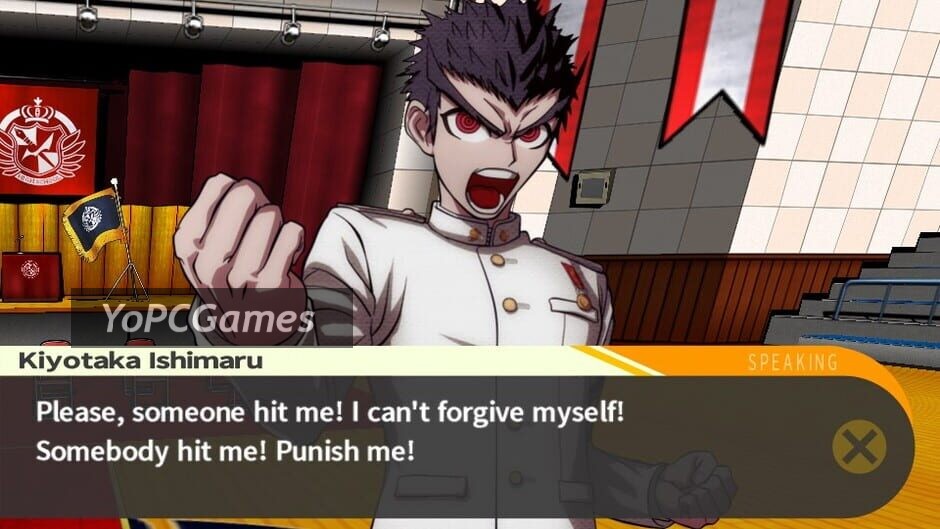
Each student is an "Ultimate", such as the Ultimate Baseball Player or the Ultimate Programmer, but also some unexpected ones like Ultimate Biker Gang Leader and Ultimate Fanfiction Writer. The cast of characters is well rounded but does utilise stereotypes for a while before it really gets off the ground. This is helped along by sharp writing, voice acting and interface design to ramp the tension to a maximum. At its best, everybody is a suspect and you're feverishly going through information and refuting arguments in order to save the lives of all the innocent students (because Monokuma's rules state that if the kids blame the wrong person for the crime, that killer goes free, and all the other kids are executed).

Danganronpa trigger happy havoc download mac trial#
At its worst, the trial can feel like a comprehension exercise where the culprit is obvious from the get go and you're just waiting for the time when you can finally accuse the murderer. The player is first tasked with exploring, observing and investigating, and their knowledge of the details of a crime are then tested in a trial segment. Danganronpa is, in fact, very much like games in the Ace Attorney franchise. This makes for a great plot with an unprecedented amount of twists and turns, and the narrative complements the gameplay excellently in this regard. The belief that no character could be who they seem is driven home hard, and the writers go to lengths to make sure the player trusts nobody.

The real killer in Danganronpa though, is paranoia. The violence itself is sparse but when it strikes, it can be truly disturbing. Danganronpa is a more hopeful game than one would expect though - Monokuma actually has quite a hard time convincing the kids to kill each other and the game subsequently becomes an exploration of the despair required for a person to reach their limit and lose all previous convictions against violence in order to take the life of another. The only way out is to murder a classmate and avoid taking blame for the crime.ĭanganronpa takes a lot of inspiration from the "school aged children do terrible things to each other" tropes present in Japanese films such as Battle Royale and Confessions, in which we see how societal pressures to achieve and excel can drive out the human capacities for love and empathy. The children are instructed that they are trapped in the school forever and will be cared for, although all communication to the outside world is prohibited. Or at least, that's the original idea: the fifteen students are knocked out when they first enter the school and wake to suddenly find themselves in Despair Academy, a school with no classes, bolted windows, constant surveillance and perhaps the most terrifying character ever written in a videogame, Monokuma. By gathering the best and brightest Japanese youths, the school board aims to revitalise hope in the next generation. The premise is that fifteen schoolchildren, each the absolute "ultimate" in their field, are invited to attend a prestigious Japanese boarding school known as Hope's Peak. Related reading: For a second take on this game, check out Matt's review of the original on PlayStation Vita. That last detail probably describes Danganronpa's tone better than any other sentence I've written so far. It's darkly humorous, compelling and often times offputting, with a rapid pace that keeps players feverishly advancing text until the truth is revealed. Danganronpa: Trigger Happy Havoc, a visual novel by Spike Chunsoft, embodies this method of storytelling to a T, focusing on the opposition between hope and despair and charging the player character to defend optimism in the face of an ever mounting gauntlet of fear and distrust. We see this in games about war, games about revenge, games about politics and even games about relationships - whether through mechanics or cutscene philosophising, the conflict is always perceivable to the player. If the essence of drama is conflict, then the most dramatic of games will always revolve around the diametric opposition of two key ideals, and the supporters of those ideals rallied together on each side.


 0 kommentar(er)
0 kommentar(er)
